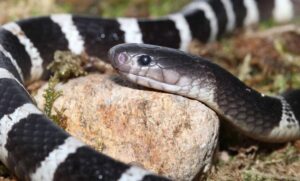Blue whales, giraffes, walruses… are all on the list of the largest animals in the world. Each species has its own unique characteristics that create a vibrant and fascinating natural world. Let’s explore the Top 15 Largest Animals in the World – Nature’s Incredible Giants with KnowAllAnimals through the article below.
1. Top 15 Largest Animals in the World – Nature’s Incredible Giants
In nature, we have many different species of animals, both large and small. Below are the 15 largest animals in the world, categorized by type such as mammals, reptiles, birds, amphibians, etc.
1.1. Largest Fish
- Kingdom: Animalia
- Phylum: Chordata
- Class: Mammalia
- Order: Artiodactyla
- Suborder: Whippomorpha
- Infraorder: Cetacea
- Family: Balaenopteridae
- Genus: Balaenoptera
- Species: B. musculus
The blue whale is a marine mammal belonging to the suborder of baleen whales. With a length of about 25 – 27 m (the longest blue whale known to date is 33.5 m) and a weight of about 210 tons or more. A blue whale’s tongue weighs about 2.7 tons, equivalent to the average size of an Asian elephant, and its heart weighs about 600 kg, the largest of any known animal. The heart is not only similar in size to a Mini Cooper car but also in weight.
Blue whales almost exclusively eat small shrimp-like creatures, collectively known as krill. During the summer, blue whales eat a lot, consuming an incredible amount of food each day, 3.6 tons (7,900 pounds) or more. The daily caloric intake of an adult blue whale is around 1.5 million.
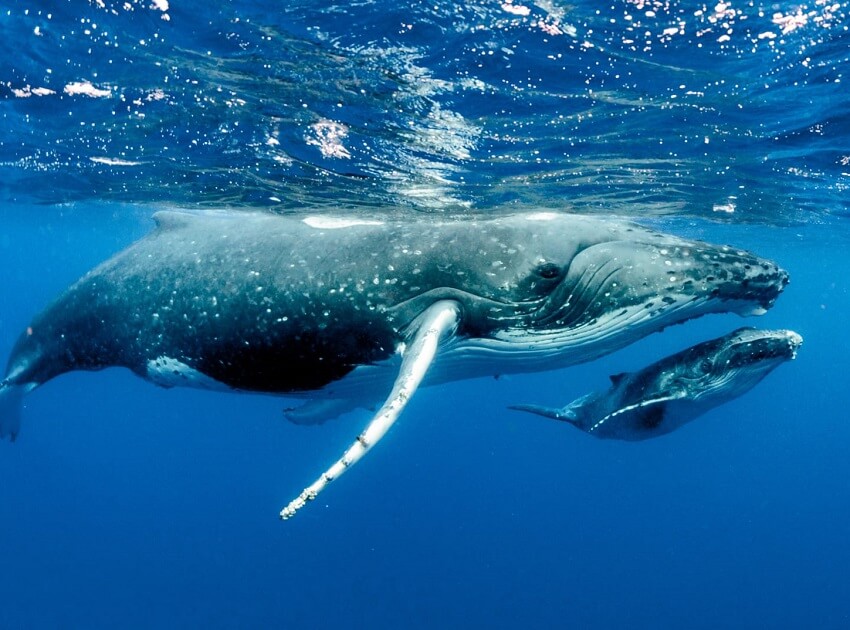
1.2. Heaviest Land Animal in the World
- Kingdom: Animalia
- Phylum: Chordata
- Class: Mammalia
- Order: Proboscidea
- Family: Elephantidae
- Tribe: Loxodontini
- Genus: Loxodonta
- Anonymous, 1827
The African elephant is the largest land animal in the world. Males are 6 – 7.5 m long, 3.3 m tall at the shoulder, and weigh 6 tons. Females are quite a bit smaller, about 5.4 – 6.9 m long, 2.7 m tall at the shoulder, and weigh 3 tons. Adult African elephants generally have no natural predators due to their large size, but calves are vulnerable to attacks from lions and crocodiles, and occasionally leopards and hyenas.
1.3. Tallest Land Animal in the World
- Kingdom: Animalia
- Phylum: Chordata
- Class: Mammalia
- Order: Artiodactyla
- Family: Giraffidae
- Subfamily: Giraffinae
- Genus: Giraffa Brisson, 1762
The giraffe is a hoofed mammal from Africa and is the tallest living land animal in the world. It stands 5 – 6 m tall and has an average weight of 1,600 kg for males and 830 kg for females. The giraffe has an extremely long neck, which can be over 2 m, accounting for nearly half of the animal’s height.
1.4. Largest Carnivorous Marine Animal in the World
- Kingdom: Animalia
- Phylum: Chordata
- Class: Mammalia
- Order: Carnivora
- Suborder: Caniformia
- Parvorder: Pinnipedia
- Family: Phocidae
- Genus: Mirounga
- Species: M. leonina
The Southern elephant seal is the largest carnivorous marine animal today. While females weigh an average of 400 – 900 kg and are 2.6 – 3 m long, males average between 2,200 and 4,000 kg and are 4.5 – 5.8 m long. The record size for a male was recorded at Possession Bay, South Georgia, on February 28, 1913, measuring 6.85 m and with an estimated weight of 5,000 kg.
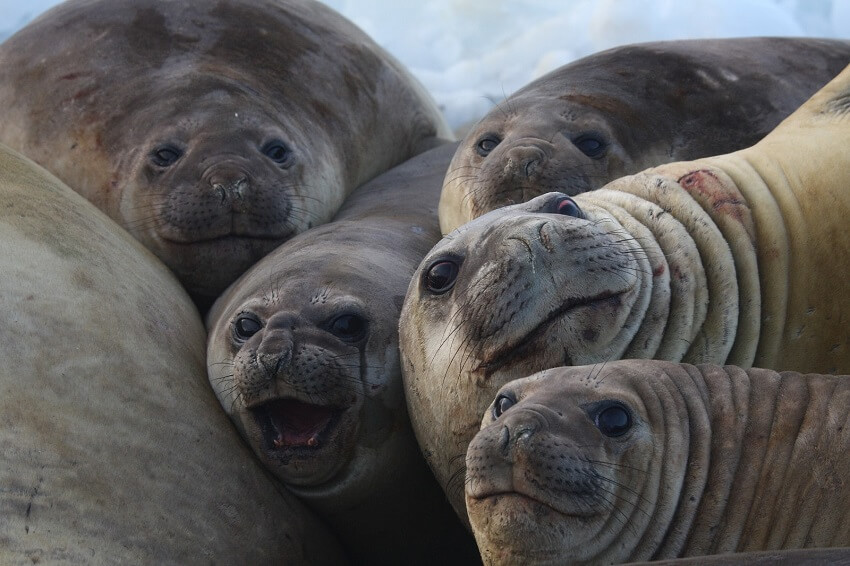
1.5. Largest Land Carnivore
- Kingdom: Animalia
- Phylum: Chordata
- Class: Mammalia
- Order: Carnivora
- Suborder: Caniformia
- Family: Ursidae
- Subfamily: Ursinae
- Genus: Ursus
- Species: U. maritimus
The largest living land carnivores are the polar bear and the Kodiak bear, a subspecies of the brown bear. Since they are similar in body size, it is not clearly determined which species is larger. In both species, the shoulder height is measured to be over 1.6 m and the total length is 3.05 m. The heaviest recorded polar bear and brown bear weighed 1,003 kg and 1,135 kg, respectively.
1.6. Largest Reptile in the World
- Kingdom: Animalia
- Phylum: Chordata
- Class: Reptilia
- Clade: Archosauria
- Order: Crocodilia
- Superfamily: Crocodyloidea
- Family: Crocodylidae
- Genus: Crocodylus
- Species: C. porosus
The saltwater crocodile is the largest reptile. It is found in habitats from northern Australia through Southeast Asia to the eastern coast of India. An adult male saltwater crocodile weighs 409 to 1,000 kg and has a typical length of 4.1 – 5.5 m. The saltwater crocodile is a predator, capable of attacking nearly any animal that enters its territory, either in the water or on land.
1.7. Largest Amphibian
- Kingdom: Animalia
- Phylum: Chordata
- Class: Amphibia
- Order: Urodela
- Family: Cryptobranchidae
- Genus: Andrias
- Species: A. davidianus
The Chinese giant salamander is the largest salamander in the world, reaching a length of 180 cm. This species lives in rocky mountain streams and lakes in China and is critically endangered due to habitat loss from pollution. It is considered a delicacy and is used in traditional Chinese medicine.
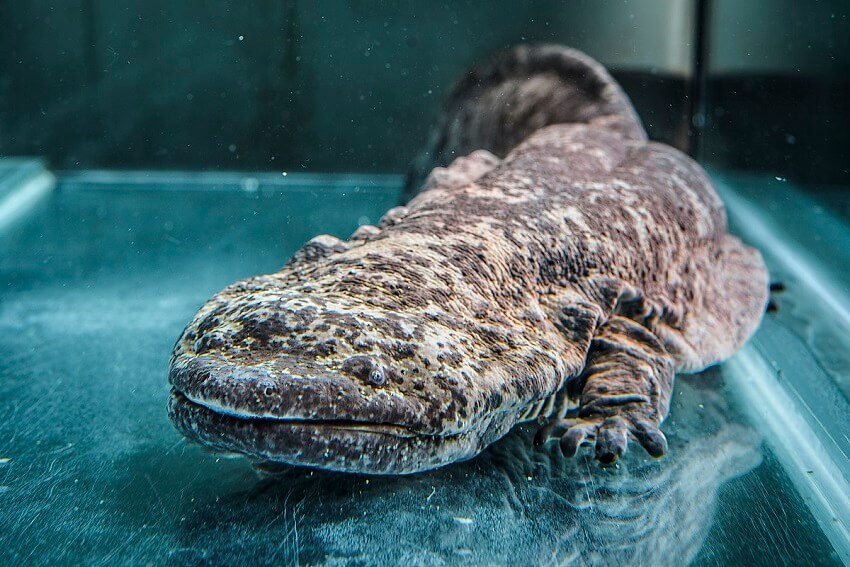
1.8. Giant Rabbit Species
The Flemish Giant is a domesticated rabbit breed, originating from the Flemish region. It was first bred as early as the 16th century around the city of Ghent, Belgium. This rabbit breed can weigh up to 12.7 kg.
1.9. Large Bat Species
- Kingdom: Animalia
- Phylum: Chordata
- Class: Mammalia
- Order: Chiroptera
- Family: Pteropodidae
- Genus: Acerodon
- Species: A. jubatus
The largest bat species is the giant golden-crowned flying fox, an endangered fruit bat from the rainforests of the Philippines that is part of the bat order. Its maximum size is nearly 1.5 kg, 55 cm long, and its wingspan can be close to 1.8 m.
1.10. Largest Rodent
- Kingdom: Animalia
- Phylum: Chordata
- Class: Mammalia
- Order: Rodentia
- Family: Caviidae
- Genus: Hydrochoerus
- Species: H. hydrochaeris
The largest rodent is the capybara, native to most of the tropical and temperate regions of South America east of the Andes Mountains. An adult capybara can reach 1.5 m in length, 0.9 m in height at the shoulder, and a maximum weight of 105.4 kg. It is a highly social species and can be found in large groups of about 100, but typically lives in groups of 10-20.
1.11. Largest Bony Fish
- Kingdom: Animalia
- Phylum: Chordata
- Class: Actinopterygii
- Order: Tetraodontiformes
- Family: Molidae
- Genus: Mola
- Species: M. mola
The largest bony fish is the ocean sunfish, which is widely distributed. It resembles a fish head with a tail, and its main body is flattened. Adult ocean sunfish have an average length of 1.8 m, a fin-to-fin length of 2.5 m, and an average weight of about 1,000 kg, although one fish measuring up to 3.3 m in length, 4.2 m fin-to-fin, and weighing up to 2,300 kg has been observed.
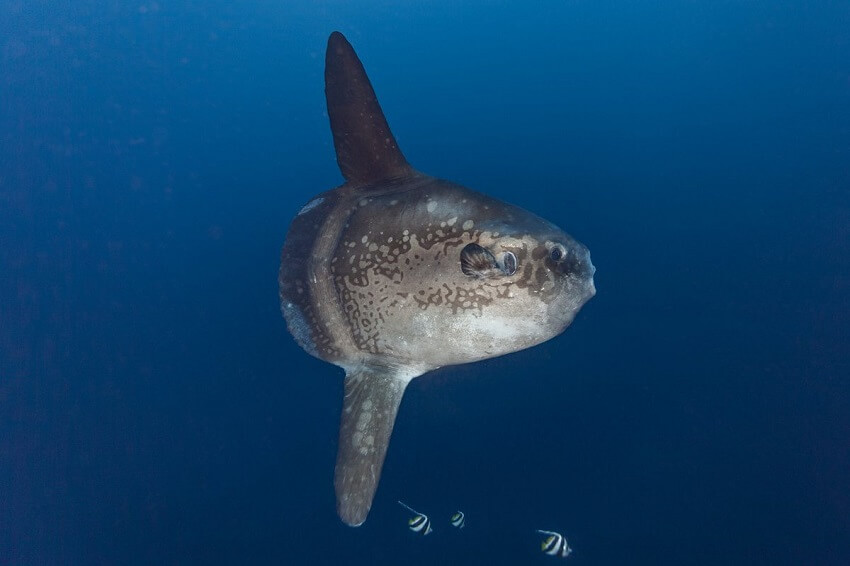
1.12. Largest Lizard/Snake
- Kingdom: Animalia
- Phylum: Chordata
- Class: Reptilia
- Order: Squamata
- Suborder: Serpentes
- Family: Boidae
- Genus: Eunectes
- Species: E. murinus
The largest living member of this giant reptile species is the green anaconda from the river systems of Central America. The maximum confirmed size is 7.5 m in length and 250 kg in weight. The reticulated python of Southeast Asia is more slender but longer, and has been reported to have a length of 9.7 m.
1.13. Largest Bird
- Kingdom: Animalia
- Phylum: Chordata
- Class: Aves
- Infraclass: Palaeognathae
- Order: Struthioniformes
- Family: Struthionidae
- Genus: Struthio
- Species: S. camelus
The largest bird is the ostrich, which comes from the plains of Africa and Arabia. An adult male African ostrich can reach a height of 2.8 m, weighing over 156 kg. Ostrich eggs weigh up to 1.4 kg and are the largest eggs in the world today. They can run at a top speed of about 97.5 km/h, making them the fastest bird on land and the fastest two-legged animal in the world.
1.14. Heaviest Flying Bird in the World
- Kingdom: Animalia
- Phylum: Chordata
- Class: Aves
- Order: Pelecaniformes
- Family: Pelecanidae
- Genus: Pelecanus
- Species: P. crispus
The Dalmatian pelican lives in marshes and shallow lakes from southeastern Europe to India and China. It is the largest species of pelican, with an average length of 160 – 180 cm, a weight of 11 – 15 kg, and a wingspan of over 3 m. With an average weight of 11.5 kg, it is the heaviest flying bird in the world.
1.15. Largest Arthropod in the World
- Kingdom: Animalia
- Phylum: Arthropoda
- Class: Malacostraca
- Order: Decapoda
- Suborder: Pleocyemata
- Infraorder: Brachyura
- Family: Macrocheiridae
- Genus: Macrocheira
- Species: M. kaempferi
The Japanese spider crab is a species of marine crab that lives in the waters around Japan. It has the largest leg span of any arthropod, reaching up to 3.8 m and a weight of up to 19 kg. In its natural habitat, the Japanese spider crab eats shellfish or animal carcasses and can live for up to 100 years.

2. FAQs
1. What is the largest animal in the world today?
The blue whale (Balaenoptera musculus) holds the title of the largest animal ever known to exist, reaching lengths of over 30 meters and weighing up to 200 tons.
2. Are all of the largest animals living in the ocean?
No. While many giants like the blue whale live in the ocean, some massive animals such as African elephants and giraffes are found on land.
3. How do scientists measure the size of these animals?
They use various methods, including direct measurement, laser scanning, and estimation based on bones or photographic evidence.
4. Were prehistoric animals larger than animals today?
Yes. Some prehistoric creatures, like the Argentinosaurus and Megalodon, were significantly larger than most modern-day animals.
From the colossal blue whale gliding through the ocean to the majestic African elephant standing tall on the savanna, the animal kingdom is full of “giants” that leave us in awe and wonder. This list of the Top 15 Largest Animals in the World – Nature’s Incredible Giants not only showcases natural wonders but also reminds us of the incredible diversity and extraordinariness of life on Earth.
Whether they live in the deep sea, dense forests, or vast grasslands, each “giant” plays a crucial role in its ecosystem. As we admire their size and power, let’s remember that protecting them is our responsibility so that future generations can still see and admire them.



